Some time ago, in the article System Glashütte – What’s that?, I explained where the term System Glashütte comes from and why it has more to do with Switzerland than with Glashütte. Naturally, the Swiss manufacturers of movements that were supposed to suggest that they were from Glashütte usually had no interest in leaving their company name on these movements. Accordingly, in some cases it is difficult to find the manufacturer or an exact caliber designation.

In this case, the Swiss Federal Office of Intellectual Property helped by publishing the illustrations of the movement models registered in the Swiss Official Gazette of Commerce between 1889 and 1900. I have reported on this here: Swiss Official Gazette of Commerce as Watch Movement Identifier – Part 2
We’ll come back to that in a moment. But before that, I can show you an advertisement from the Schwab-Loeillet company in the Deutsche Uhrmacherzeitung (German Watchmaker Newspaper), which proves that the name Système Glashütte has been in use since at least 1889:
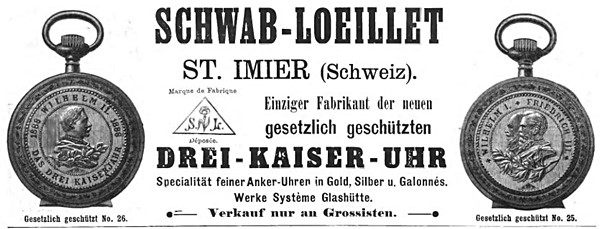
By the way, the term Drei-Kaiser-Uhr (Three Emperors’ Watch) in the advertisement refers to the fact that in 1888 there were three German emperors within just four months due to deaths.
So now to the movements!
Hahn Model No. 19
We start with a movement by Charles Hahn, which he registered as model no. 19 in the Swiss Official Gazette of Commerce in 1893:
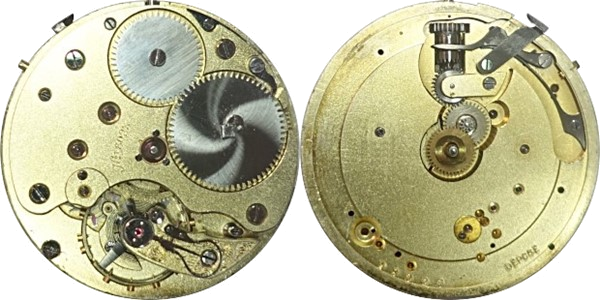
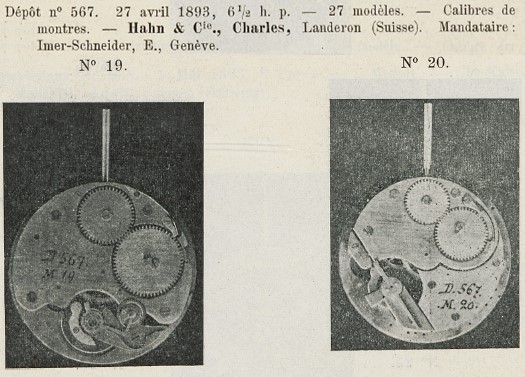
The movement has a diameter of 20´´´ (French Lines), crown winding/setting with lever, 16 jewels, one of which is in a screwed chaton (setting), a bimetallic screw balance with Breguet hairspring and a swan-neck regulator. In the registration illustration, model no. 19 has a slightly different fine adjustment on the balance cock.
This movement is the oldest model registered in the Swiss Official Gazette of Commerce that can be clearly assigned to the “System Glashütte” design.
Some 30 years later, Charles Hahn renamed his company and gave it the name of the place where it was founded, Landeron. It is known worldwide for its chronograph movements.
FHF Model No. 245
We continue with the manufacturer whose System Glashütte movements are most frequently encountered, the Fabrique d’Horlogerie de Fontainemelon (FHF). This company registered model no. 245 on August 14, 1897:
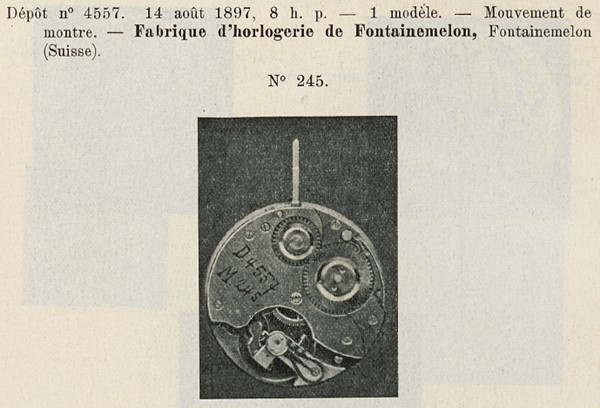
It does not have a genuine three-quarter plate, but a separate mainspring barrel bridge that fits very closely to the train bridge.
The FHF model no. 245 is available in different types, which I present to you here. These types differ in the way the hands are set, in the presence of a cover plate for hand setting wheels and in the number of handsetting wheels:
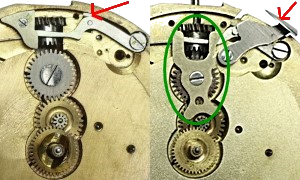
green: on the right with cover plate for hand setting wheels, on the left without
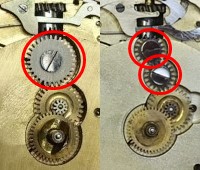
The movements I have so far have a diameter of 19´´´, 20´´´ or 21´´´, and there may be others. They have a Swiss lever escapement, a bimetallic screw balance with Breguet hairspring, a small second hand and 15 or 16 jewels. Some also have covered lever pallets or a swan-neck fine regulator.
Interestingly, there seems to be only the Savonnette (hunter) version of this movement, at least I haven’t come across a Lépine (open face) movement yet.
FHF Model No. 245 Type 1
- Hand setting with crown and lever or crown and pin pusher
- Without cover plate for hand setting wheels
- One hand setting wheel

FHF Model No. 245 Type 2
- Hand setting with crown and lever
- With cover plate for hand setting wheels
- One hand setting wheel
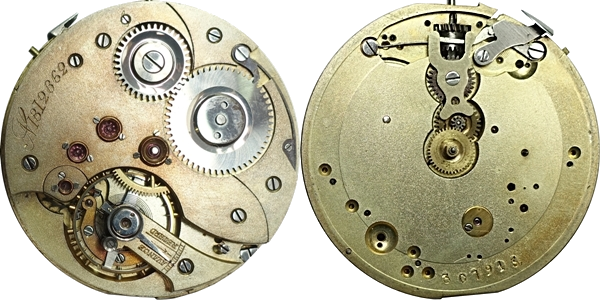
FHF Model No. 245 Type 3
- Hand setting by pulling the crown
- With cover plate for hand setting wheels
- One hand setting wheel

This movement bears the Swiss patent number 51482 on the dial side. This FHF patent from 1910 describes the winding and hand-setting mechanism without a lever or pusher. Model 245 was therefore produced for more than 20 years with minor modifications.
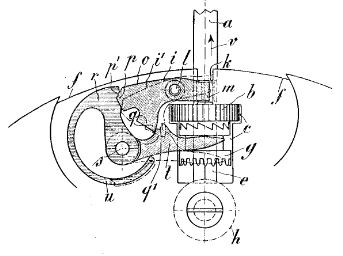
FHF Model No. 245 Type 4
- Hand setting by pulling the crown
- Without cover plate for hand setting wheels
- Two hand setting wheels

Shortly before the model 245, FHF also registered a model no. 244 on July 19, 1897, which can also be assigned to the “System Glashütte” design:
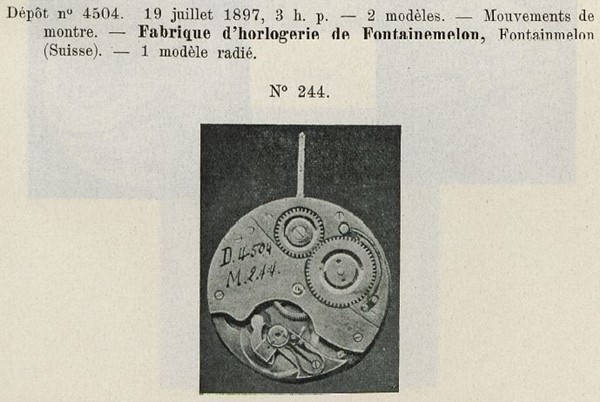
However, I have not yet come across any real movement for this model.
Kocher, Hänni & Künzli Model No. 18
Kocher, Hänni and Künzli registered this movement in the Swiss Official Gazette of Commerce in 1894 as model no. 18. Kunzli is misspelled in the SOGC, the gentleman’s name was actually Künzli.
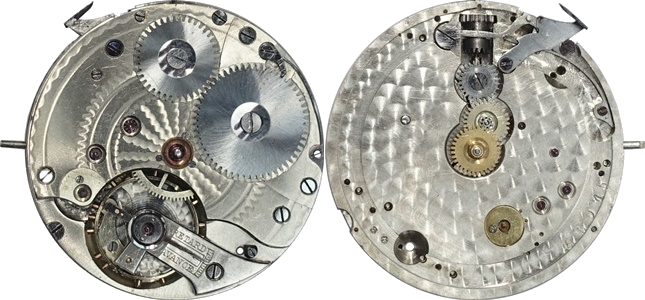
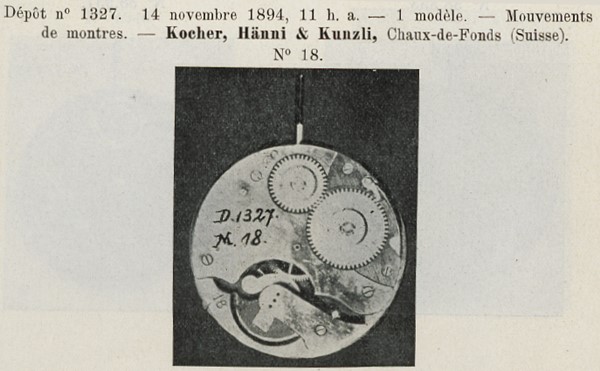
The movement has a diameter of 19”’, crown winding with lever, 16 jewels, one of them in a screwed chaton, and a bimetallic screw balance. Like the FHF movements shown above, it does not have a genuine three-quarter plate, but a separate barrel bridge.
This movement is also shown in an advertisement by Hänni & Cie from 1903, which I showed in the first part on the System Glashütte. The company Kocher, Hänni & Künzli was founded in 1892, renamed Hänni, Künzli & Cie in 1895 and then Hänni & Cie. in 1897.
